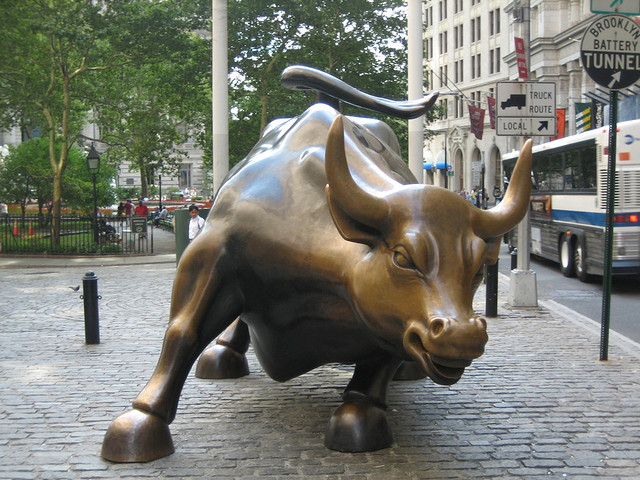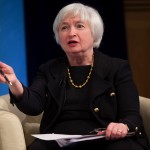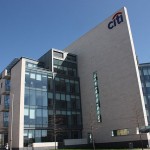Here’s today’s ‘Just A Minute’ bringing you a 60 second summary of what’s happening in the financial markets:
Main Trading Event Of The Day: U.S. Unemployment Claims @ 12.30 GMT
WHAT WE’RE WATCHING TODAY
Is There An End In Sight To The Six-Year Bull Run?
Are stocks telling us that a bear market is coming? That’s the opinion of some analysts who point out that bear markets ‘start with a whimper or a bang’. When it starts with a bang, the first clue will be a major break in the market that no one can explain. That will eventually be followed by a correction at which point everyone will be aware that something bad has happened. Should this happen, indexes will fall by double digits, investors will panic, and stocks will nosedive. But when a bear market starts with a whimper, it confuses nearly everyone. A meandering, volatile market is frustrating. At first, bulls will be hopeful that the market will keep going up, but eventually, the market tops out and retreats. Typically, a market making new highs is a healthy sign. In a looming bear market, new highs on lower volume is a warning sign. Right now, the strongest case for the bulls is the Fed but in the history of the stock market, no institution has been able to prevent a bear market. What might cause the market to snap is not certain - it could be an economic event, a geopolitical crisis, or a spike in interest rates. If it happens, nearly everyone will realise the market is in trouble at which point everyone will attempt to sell at once. Is that crunch time getting closer? No one knows but some believe a bear market is inevitable sooner rather than later.
The U.S. stock market closed broadly lower yesterday, as investors turned cautious amid a sell-off of small and high-growth companies. The benchmark S&P 500 and Dow Jones Industrial Average retreated from record levels set on Tuesday. The S&P 500 finished 8.92 points, or 0.5% lower at 1,888.53. The Dow Jones Industrial Average broke its five-day winning streak and closed 101.47. points, or 0.6%, lower at 16,613.97. The Nasdaq Composite ended the day down 29.54 points, or 0.7%, at 4,100.63.
Dollar Holds Losses Before Yellen Speaks Today
With Federal Reserve Janet Yellen due to speak later today and expectations that the central bank will maintain stimulatory policies, the U.S. dollar managed to hold losses against the majority of its 16 major peers after touching its lowest in almost a week versus the yen yesterday. Yellen told Congress last week the economy needs support. A report showed Japan’s gross domestic product expanded at the fastest pace in 2 1/2 years, damping bets for additional Bank of Japan easing. The euro remained higher versus the pound before figures that may indicate growth accelerated in the eurozone. The dollar slipped 0.1 percent to 101.83 yen after touching 101.66, the lowest level since May 9. It traded at $1.3718 per euro from $1.3715.
WTI Drops From Three-Week High; Brent Remains Steady
West Texas Intermediate slid from a three-week high after government data showed crude inventories expanded as production increased to a 28-year peak in the U.S. Brent was steady in London. Futures fell as much as 0.5 percent in New York, the first drop in four days. Crude stockpiles rose to a near-record last week as output climbed to the highest rate since 1986. WTI for June delivery declined as much as 47 cents to $101.90 a barrel on the New York Mercantile Exchange reaching $102.11 at 3:15 p.m. Sydney time. The volume of all futures traded was about 19 percent below the 100-day average. Prices are up 3.8 percent this year. Brent for June settlement was 11 cents lower at $110.08 a barrel on the London-based ICE Futures Europe exchange.
That sums up today’s highlights! Catch up on all the latest news on Facebook, Google+,Twitter and LinkedIn. We hope you have a profitable day on the markets.










